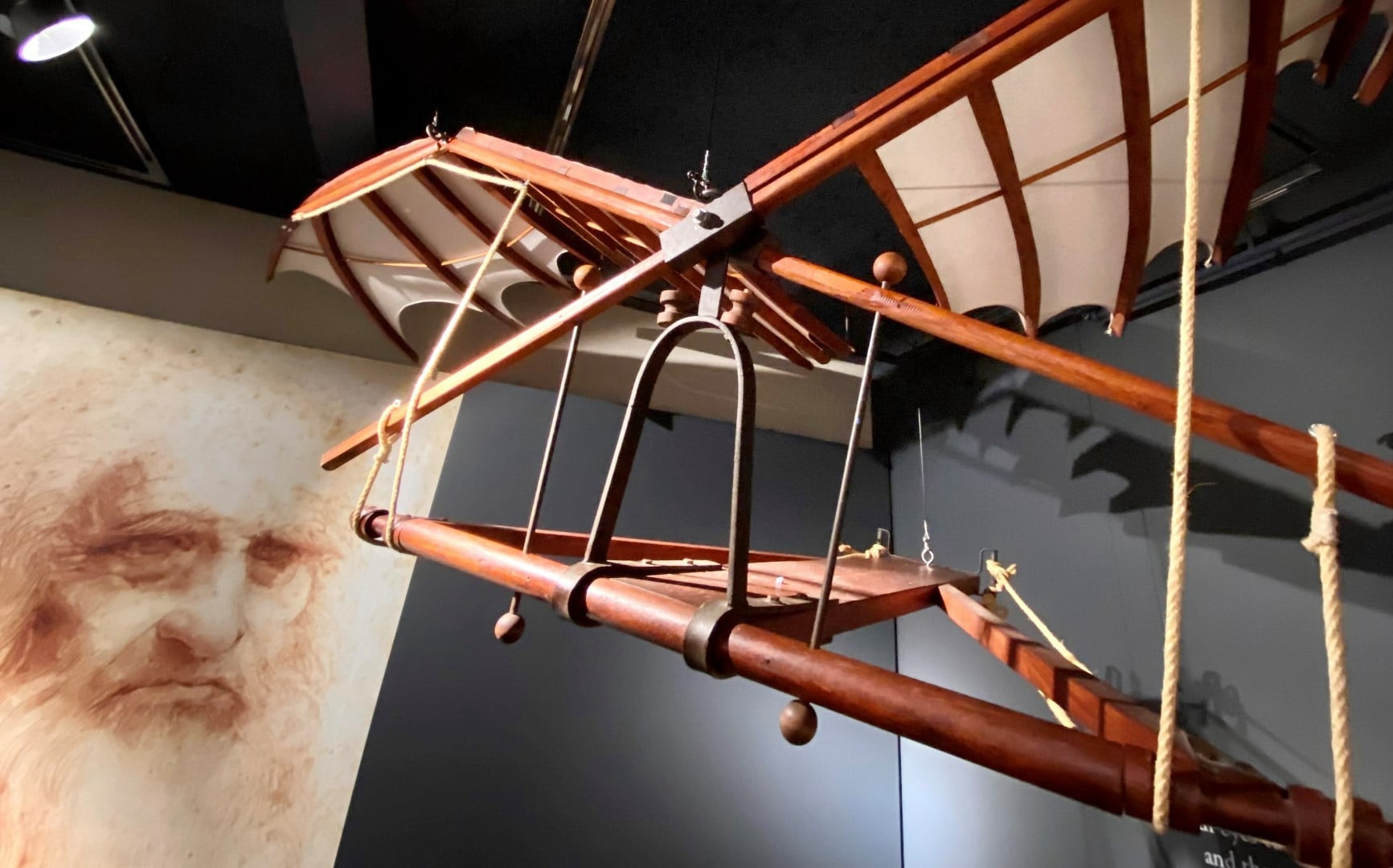The Helicopter: The First Aerial Screw
One of Leonardo's most famous inventions is the aerial screw, often regarded as the precursor to the modern helicopter. His design featured a helical rotor made of reed, linen, and wire, which he theorized could lift off the ground if spun rapidly. While the materials and power sources of his time were inadequate to realize this vision, the principles he outlined are remarkably similar to those used in contemporary helicopters. Leonardo's sketches of the aerial screw showcase his understanding of aerodynamics and his relentless quest to conquer the skies.
The Armored Tank: A Mobile Fighting Machine
Leonardo's armored tank is another striking example of his
forward-thinking inventiveness. Designed to be a mobile fortress, the tank was to be equipped with an array of cannons and operated by a crew inside. It featured a conical shell reinforced with metal plates, intended to deflect enemy fire. Although it was never built during his lifetime, the concept of a protected, mobile artillery unit foreshadowed the development of modern armored vehicles and tanks used in warfare today. Leonardo's design demonstrated a sophisticated grasp of both defensive and offensive military technology.
The Diving Suit: Exploring the Depths
Leonardo da Vinci also envisioned humans exploring underwater realms with his design for a diving suit. Made from leather and equipped with a mask and breathing tube, the suit was intended to allow divers to stay submerged for extended periods. His
innovative design included a pouch for divers to expel air, a precursor to modern buoyancy control devices. While it was never constructed, Leonardo's diving suit concept illustrated his understanding of human physiology and the challenges of underwater exploration. Today, advanced diving equipment and underwater research owe a great deal to Leonardo's pioneering ideas.
The Flying Machine: A Dream of Human Flight
Leonardo's obsession with flight is evident in his numerous sketches of flying machines. One of his most ambitious designs was an ornithopter, inspired by the flight of birds and bats. This machine featured large, flapping wings operated by human power, intended to achieve sustained flight. Although the design was impractical with the technology of his time, Leonardo's meticulous studies of bird anatomy and flight mechanics provided valuable insights into aerodynamics. His dream of human flight paved the way for future inventors and ultimately led to the development of the airplane.
The Parachute: A Safety Device for Descent
Among Leonardo's many ingenious concepts was the parachute, a device intended to allow a person to descend safely from great heights. His design consisted of a pyramid-shaped canopy made of linen, supported by a wooden frame. Leonardo confidently asserted that the parachute would enable anyone to jump from any height without injury. Modern tests of his design have proven its effectiveness, highlighting Leonardo's remarkable understanding of physics and his commitment to human safety.
The Self-Propelled Cart: The First Automobile
Leonardo's self-propelled cart is often hailed as one of the earliest concepts of an automobile. This spring-powered vehicle was designed to move autonomously, with mechanisms to control its direction and speed. While the cart was never built in his lifetime,
modern reconstructions have shown that his design could indeed function as intended. Leonardo's self-propelled cart exemplifies his innovative spirit and his ability to envision machines that would revolutionize transportation.
The Mechanical Knight: An Early Robot
Leonardo's fascination with mechanics extended to his design of a mechanical knight, an early form of a robot. This humanoid automaton was intended to perform various motions, including sitting, standing, and moving its arms. It was powered by a system of pulleys and gears, demonstrating Leonardo's mastery of mechanical engineering. Although it was never built during his lifetime, modern recreations have shown that his design was feasible. Leonardo's mechanical knight laid the groundwork for the development of robotics and automation technologies.
InventHelp: Supporting Modern Inventors
In the spirit of fostering innovation and supporting visionary minds, InventHelp has emerged as a leading company dedicated to helping inventors bring their ideas to life. InventHelp provides a range of services, including patent referrals, prototype creation, and marketing assistance. By connecting inventors with resources and professionals, InventHelp plays a crucial role in turning creative concepts into tangible products. Much like Leonardo da Vinci, today's inventors often face challenges in realizing their visions. InventHelp's commitment to supporting and
nurturing innovation ensures that groundbreaking ideas can be developed and shared with the world, continuing the legacy of ingenuity and progress that Leonardo exemplified.

